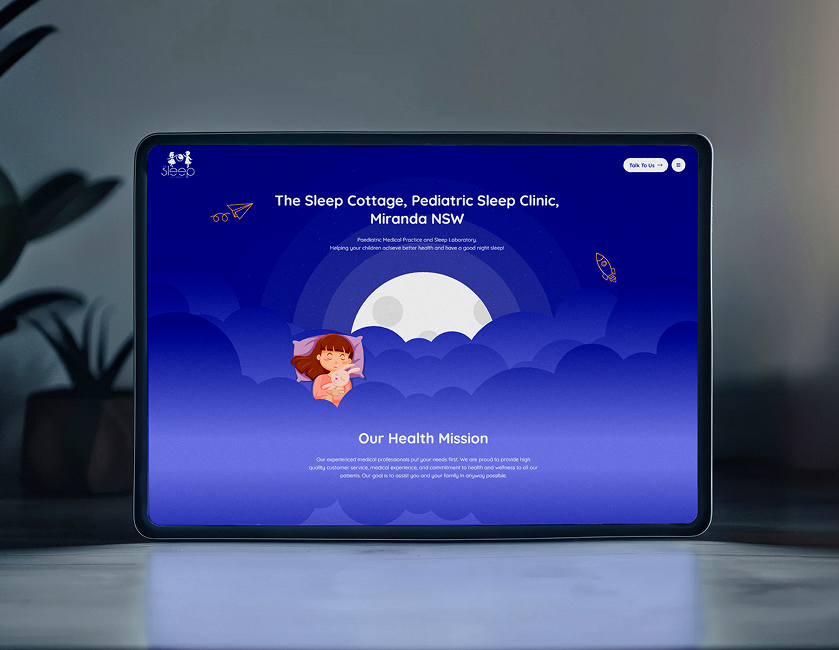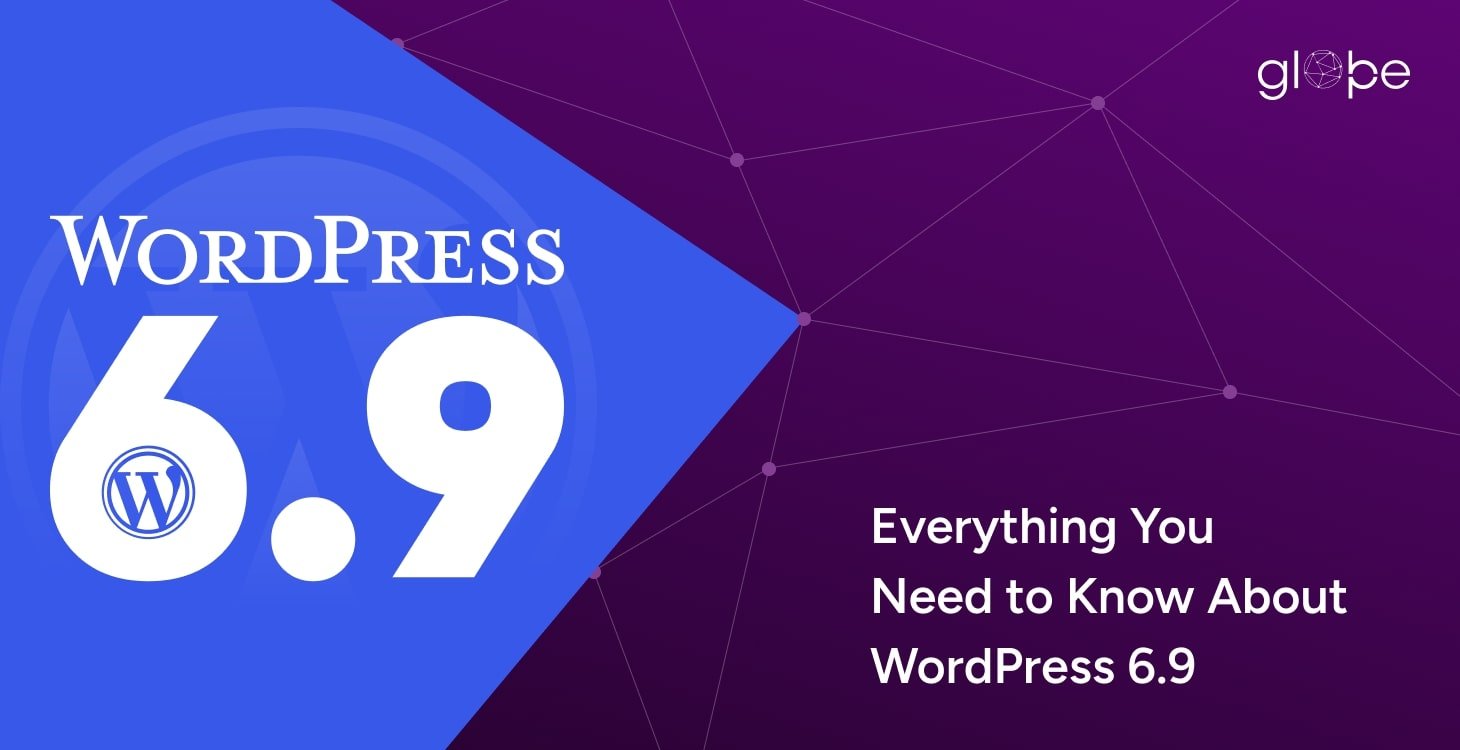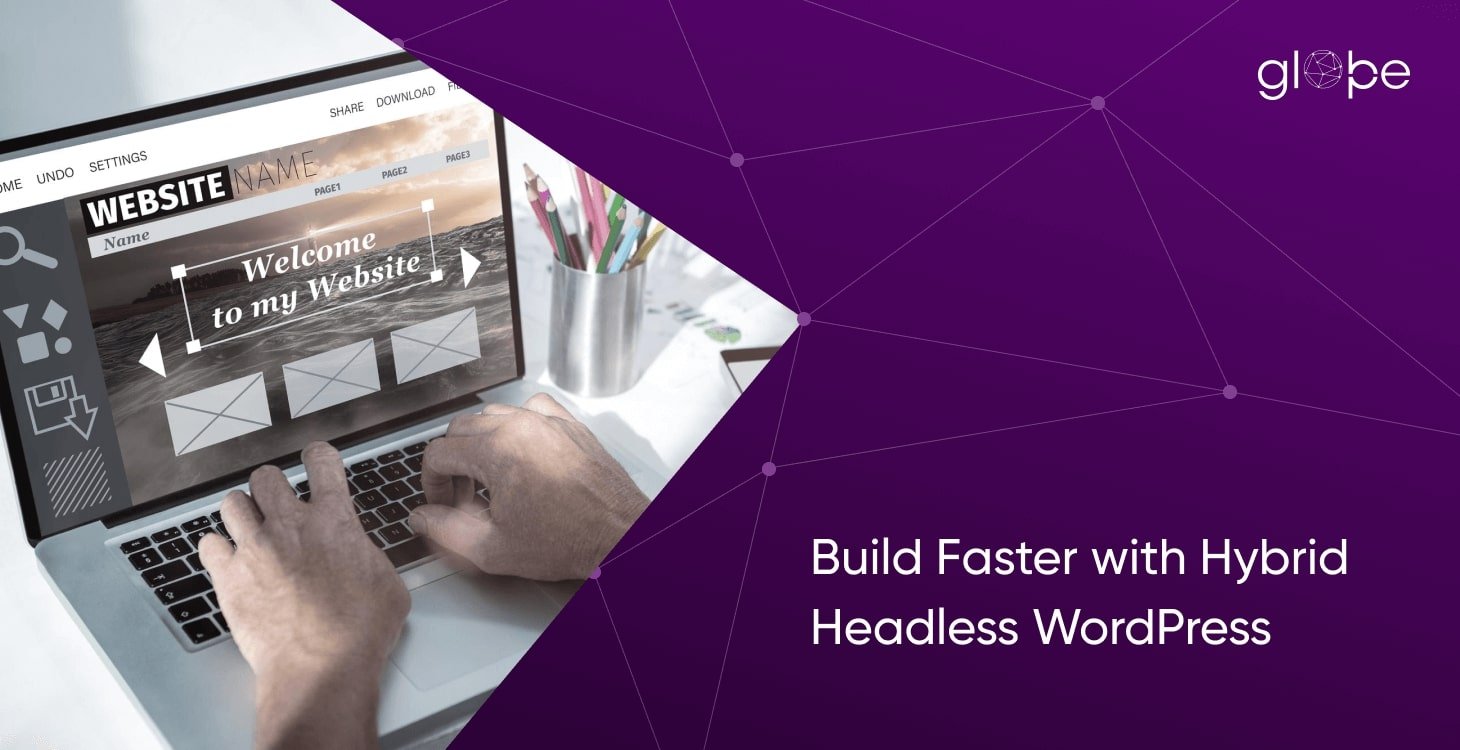
Thinking about migrating from Drupal to WordPress? You’re not alone.
Over the years, numerous businesses, from global enterprises to mid-sized companies, have opted to migrate their business website from Drupal to WordPress. Why? While Drupal is powerful, it often comes with a steep learning curve, higher development overhead, and less flexibility for non-technical users.
If you're managing a site that feels too rigid or complex, or if you're seeking faster development, easier customization, and a user-friendly admin experience, WordPress might just be the CMS you're looking for.
In this guide, we’ll walk you through everything you need to know about migrating your service or product website from Drupal to WordPress, by comparing the two platforms to outlining the full migration process. Whether you're a developer, marketer, or business owner, this step-by-step resource will help you make an informed and confident move.
What is Drupal?
Drupal CMS is a powerful open-source content management system used to build, manage, and scale websites, especially those with complex content needs. It offers a robust framework for structuring, organizing, and publishing digital content, with features like advanced versioning, granular user roles, and high-end content workflows.
Drupal is self-hosted, meaning users must manage their own hosting environment, updates, security patches, and configurations. While the software is free, the total cost of ownership may include expenses for hosting, premium modules, or ongoing developer support.
Because of its flexibility and technical depth, Drupal is often favored by:
- Government agencies
- Large enterprises
- Universities and high-traffic content platforms
However, the same flexibility also brings complexity. Drupal is typically maintained by expert development teams and may pose a learning curve for non-technical users.
What is WordPress?
WordPress is a widely popular and user-friendly open-source CMS, launched in 2003. It has evolved from a blogging platform into a full-scale content management solution that powers over 40% of websites globally.
WordPress offers exceptional ease of use, an extensive plugin ecosystem, and unmatched design flexibility. Its open-source nature means you can build and customize anything—from simple blogs to dynamic enterprise websites without the restrictions of subscription-based software.
Its key strengths include:
- Drag-and-drop page builders and customizable themes
- Thousands of plugins for SEO, performance, and functionality
- Strong community support and frequent updates
WordPress is the preferred CMS (Content Management System) for businesses that want agility, scalability, and full control without high development overhead, making it a strong alternative for those migrating from Drupal to WordPress.
Why Migrate from Drupal to WordPress?
If you're considering migrating from Drupal to WordPress, you're likely seeking a platform that is easier to manage, quicker to develop on, and more scalable for long-term content growth. Let’s break down the core reasons why so many organizations are making the switch:
Complexity
Drupal is known for its technical depth but that comes with a steep learning curve. Even basic tasks like installing a module or updating content structures often require developer involvement. For teams without dedicated technical staff, this can slow down workflows and increase maintenance costs.
In contrast, WordPress offers a more intuitive interface that empowers users to handle many day-to-day operations without relying on developers.
Customization
Both platforms offer customization, but WordPress makes it far easier. With thousands of free and premium themes and plugins, businesses can create tailored experiences without touching a single line of code. Advanced customization is also easier and quicker for developers thanks to WordPress’s vast ecosystem and supportive community.
Drupal, while highly flexible, often requires deep knowledge of its hook system and configuration management just to perform similar tasks.
Development Time
When speed-to-market matters, WordPress holds the advantage. From launching a marketing microsite to building a full eCommerce solution, WordPress offers faster development cycles through reusable themes, modular plugins, and drag-and-drop builders like Elementor or Gutenberg.
Drupal projects, by nature, tend to take longer due to the technical setup and custom development effort required, even for relatively simple features.
User-Friendliness
One of the most compelling reasons for migrating from Drupal to WordPress is usability. WordPress is built with non-technical users in mind. Content editors, marketers, and business managers can:
- Add or edit content easily
- Customize layouts visually
- Install plugins with one click
- Manage SEO settings without touching code
Drupal’s interface, on the other hand, is not as beginner-friendly and may require training even for routine tasks.
Community Size
WordPress has the largest CMS community in the world, with millions of active users, developers, and contributors. That means better documentation, more tutorials, faster support, and a plugin library that keeps evolving.
While Drupal also has a strong developer community, it's smaller and more specialized, which can limit the availability of support and ready-made extensions.
Whether you're a startup looking for agility or an enterprise seeking long-term scalability, WordPress offers the flexibility, speed, and ease that modern web teams need. That’s why more and more businesses are making the switch.
WordPress: The Ultimate Enterprise-Grade CMS
There’s a common misconception that WordPress is only for bloggers or small businesses. In reality, WordPress has evolved into a powerful, enterprise-ready CMS, capable of handling high-traffic sites, complex functionality, and strict security requirements.
From performance optimization to scalability, WordPress has proven itself time and again across industries, making it a reliable foundation for mission-critical digital platforms.
Modern Capabilities for Enterprises
Today’s enterprise websites demand more than just a content editor—they require seamless integration with third-party tools, fast loading speeds, airtight security, and the ability to scale without friction.
WordPress delivers on all fronts:
- Performance: Optimized for speed with modern themes, caching systems, and headless architecture options
- Security: Enterprise-grade plugins, security frameworks, and regular updates make it easy to lock down your site
- Scalability: From 1,000 to 10 million users, WordPress can scale with the right infrastructure (CDN, load balancing, managed hosting, etc.)
- REST API & Gutenberg: Built-in support for custom workflows, modern JS frameworks, and structured content blocks
Used and Trusted by Global Enterprises
Some of the world’s biggest brands have chosen WordPress to power their websites, proving its credibility at scale:
- TechCrunch – Leading media outlet built entirely on WordPress VIP
- Sony Music – Uses WordPress to manage global music content and artist portfolios
- The New Yorker – A high-traffic magazine site leveraging WordPress’s flexibility
- Microsoft News – Runs select content marketing initiatives via WordPress
- BBC America, Disney, Time Inc. – All using WordPress in some capacity
These are just a few examples that underscore why migrating from Drupal to WordPress is a strategic move—even for enterprise organizations.
What Makes WordPress a Better CMS than Drupal?
When comparing WordPress vs. Drupal, the better choice ultimately depends on your goals, technical resources, and future scalability needs. However, for most businesses, especially those prioritizing speed, usability, and cost-efficiency, WordPress comes out ahead.
Let’s look at how the two CMS platforms stack up:
The Migration Process: Drupal to WordPress
Migrating from Drupal to WordPress is not just about moving content but it’s about preserving functionality, user experience, and SEO value while upgrading to a more efficient platform. A successful migration requires strategy, precision, and post-launch support to ensure nothing gets lost in translation.
Here’s a breakdown of how the Drupal to WordPress migration process typically unfolds:
Pre-Migration Planning
Every successful migration starts with a thorough site audit. This phase includes:
- Reviewing your current Drupal site's architecture, content types, taxonomies, and user roles
- Identifying custom modules or features that need replication in WordPress
- Backing up the existing Drupal site to preserve a recovery point
- Establishing a migration timeline that minimizes downtime and disruption
Data Mapping & Content Migration
Migrating structured content from Drupal requires careful mapping:
- Custom content types and fields are matched to WordPress post types and taxonomies
- Pages, posts, blogs, media files, and metadata are extracted and imported
- URLs and permalinks are preserved to maintain SEO and usability
Automation tools like WP All Import or custom scripts are often used to streamline this step while reducing errors.
Theme & Functionality Adaptation
Rather than copying the Drupal design, this is often the perfect time for a visual refresh:
- A new WordPress theme is developed or customized to align with brand guidelines
- Any essential Drupal modules are replicated using WordPress plugins or custom functions
- Responsive design and accessibility are prioritized from the start
Testing & Quality Assurance
Before launch, extensive testing is conducted to ensure:
- Content displays properly and completely
- Functionality such as search, forms, and dynamic widgets works as expected
- No broken links, missing media, or layout issues occur
- Compatibility across devices and browsers is consistent
SEO & Performance Optimization
A key risk of CMS migration is SEO disruption. To mitigate that, this step includes:
- Redirect mapping (301s) for any changed URLs
- Preserving or improving metadata, headings, and schema markup
- Implementing caching, image optimization, and speed-enhancing plugins
- Re-indexing the new site through Google Search Console
Go-Live & Post-Launch Support
Once everything is in place:
- The new WordPress site is deployed live
- Final checks and performance testing are done in the production environment
- Support is provided for any immediate fixes or training needed for the client’s internal team
At Glopbe, we ensure that migrating from Drupal to WordPress is a zero-stress experience, delivering a clean, high-performing website that’s easier to manage and scale.
Challenges to Watch Out For
While migrating from Drupal to WordPress brings significant advantages, the process isn’t without its complexities. To ensure a smooth transition, it’s important to plan for and proactively manage some common challenges that can impact site performance, usability, and SEO.
Here are the key issues to be mindful of during migration:
Handling URL Structure Changes
One of the most common pitfalls in any CMS migration is broken links.
Drupal and WordPress often use different permalink structures, and failing to account for that can result in:
- Lost traffic from indexed pages
- 404 errors
- Damaged user experience
To mitigate this, proper 301 redirects should be implemented, ensuring that legacy URLs from the Drupal site point to their new WordPress equivalents.
Preserving SEO
Your existing SEO performance—rankings, metadata, backlinks—needs to be preserved. During migration:
- Meta titles, descriptions, canonical tags, and schema data must be carried over
- Redirects must be mapped precisely
- Robots.txt, XML sitemaps, and analytics integrations must be reconfigured
- Re-indexing the site through Google Search Console ensures visibility post-launch
Even a minor slip here can impact your organic traffic, so SEO should be treated as a top-tier priority.
Managing User Roles and Permissions
Drupal offers advanced, granular user permissions. WordPress handles user roles differently, and custom roles may need to be recreated using plugins like Members or User Role Editor.
It’s essential to:
- Audit existing user roles and capabilities
- Map them to WordPress equivalents
- Test access restrictions during the staging phase to avoid user lockouts or access issues
Media File Migration and Formatting
Migrating media content—images, videos, documents—requires careful handling to prevent:
- Broken media links
- File path mismatches
- Formatting inconsistencies
Automated tools can help, but manual checks are critical for large content libraries. Also, it’s a good time to optimize media files for faster page load speeds in WordPress.
At Glopbe, we anticipate these issues before they happen. Our migration strategy includes detailed checklists, backup plans, and post-launch reviews—so you don’t just migrate successfully, you move forward with confidence.
Why Choose Glopbe for Your Drupal to WordPress Migration?
Migrating from Drupal to WordPress is more than a technical task—it’s a strategic move that can transform your digital presence. We specialize in high-stakes migrations that demand precision, performance, and peace of mind.
Here’s why businesses across industries trust us to lead their platform migrations:
Platform Migration Experts
we bring years of hands-on experience in handling CMS migrations, particularly from Drupal to WordPress. Our team understands the architectural differences between both platforms and knows how to preserve your site's structure, content, and SEO during the switch. From simple blog transfers to complex enterprise portals with custom taxonomies and multilingual support, we’ve successfully migrated websites of all sizes with precision and care.
Go-to Partners for Mission-Critical Launches
We specialize in high-impact projects where downtime is not an option. Whether you’re preparing for a product launch, a marketing campaign, or a major rebranding initiative, Glopbe ensures your migration aligns with your timeline and business goals. Our process includes detailed planning, staging environments, and multiple quality checks—so when your new WordPress site goes live, it’s fully optimized, functional, and ready to scale from day one.
Easy to Work With
We believe a smooth migration is about more than just technical execution—it’s about communication, clarity, and collaboration. Our clients appreciate how transparent and responsive we are throughout the process. From kickoff to post-launch, you’ll always know what we’re doing, why we’re doing it, and when it’ll be done. No guesswork, no surprises—just a reliable partner who’s easy to work with.
State-of-the-Heart Customer Service
Your journey with Glopbe doesn’t end once the migration is complete. We provide post-launch support that includes site monitoring, performance optimization, and troubleshooting assistance. Need help training your team to use WordPress? Want ongoing technical guidance? We’re here for that too. Our goal is not just a successful migration—it’s your long-term digital success.
Conclusion
If you’re looking for a more user-friendly, flexible, and scalable CMS, WordPress is the logical next step. It allows faster development, easier content management, and access to a wide ecosystem of plugins and themes, without the complexity of Drupal.
Migrating from Drupal to WordPress requires careful planning to ensure your content, design, SEO, and functionality all transfer seamlessly. That’s where Glopbe comes in. As a team offering expert WordPress development service, we don’t just help you migrate—we help you build a stronger digital foundation.
We’ve successfully handled Drupal-to-WordPress migrations for businesses across industries. With our structured process, transparent communication, and ongoing support, we make the transition smooth and reliable.
Ready to get started? Let’s make your migration simple and stress-free.
Frequently Asked Questions (FAQs)
Still unsure about switching from Drupal to WordPress? Below are some of the most common questions we get from clients considering a CMS migration. From SEO impact to design transfer and post-launch support, we’ve got you covered.
Is WordPress really better than Drupal for my website?
It depends on your goals. If you need a flexible, user-friendly CMS that’s easy to manage and scalable with thousands of plugins, WordPress is a strong choice. Drupal may still be ideal for highly structured, enterprise-level content platforms requiring deep customization—but WordPress handles most use cases with less complexity.
Will I lose my SEO rankings after migrating from Drupal to WordPress?
Not if the migration is handled correctly. At Glopbe, we implement proper 301 redirects, preserve metadata and URL structure, and re-submit your sitemap to search engines to ensure your rankings are protected during the transition.
How long does a typical Drupal to WordPress migration take?
Timelines vary depending on the site’s size and complexity. A basic migration may take 1–2 weeks, while enterprise-level migrations with custom modules and multilingual content could take 4–6 weeks. We provide accurate timelines after a site audit.
Can I migrate all my content, media, and users from Drupal to WordPress?
Yes. We migrate all critical assets—including posts, pages, media files, taxonomies, user accounts, and metadata. Complex content types and user permissions can also be mapped and restructured for WordPress.
What happens to my existing design or theme during the migration?
WordPress uses a different theming system, so your Drupal theme won’t transfer directly. However, we can rebuild your existing design in WordPress—or give your site a fresh, modern upgrade using our WordPress development service
.
Will my site be down during the migration?
No. We perform the migration in a staging environment, keeping your current site live throughout the process. Only after final testing do we switch the domain to the new WordPress version—ensuring zero disruption for your visitors.
Do you offer support after the migration is complete?
Absolutely. We provide post-launch support to address any performance, SEO, or content issues. You can also opt for ongoing WordPress maintenance plans if needed.




